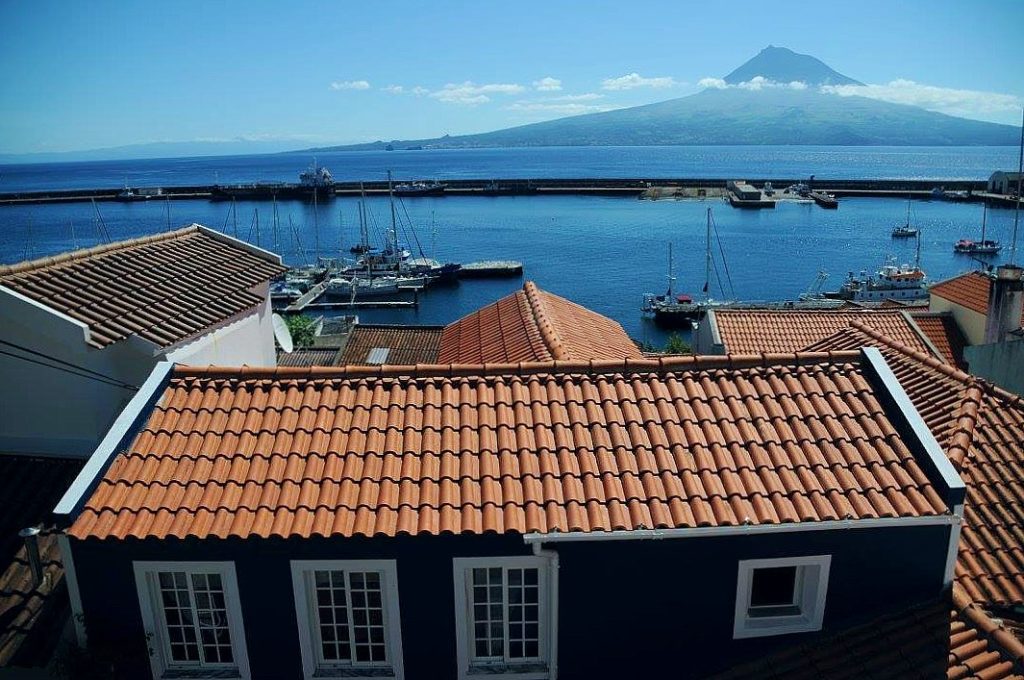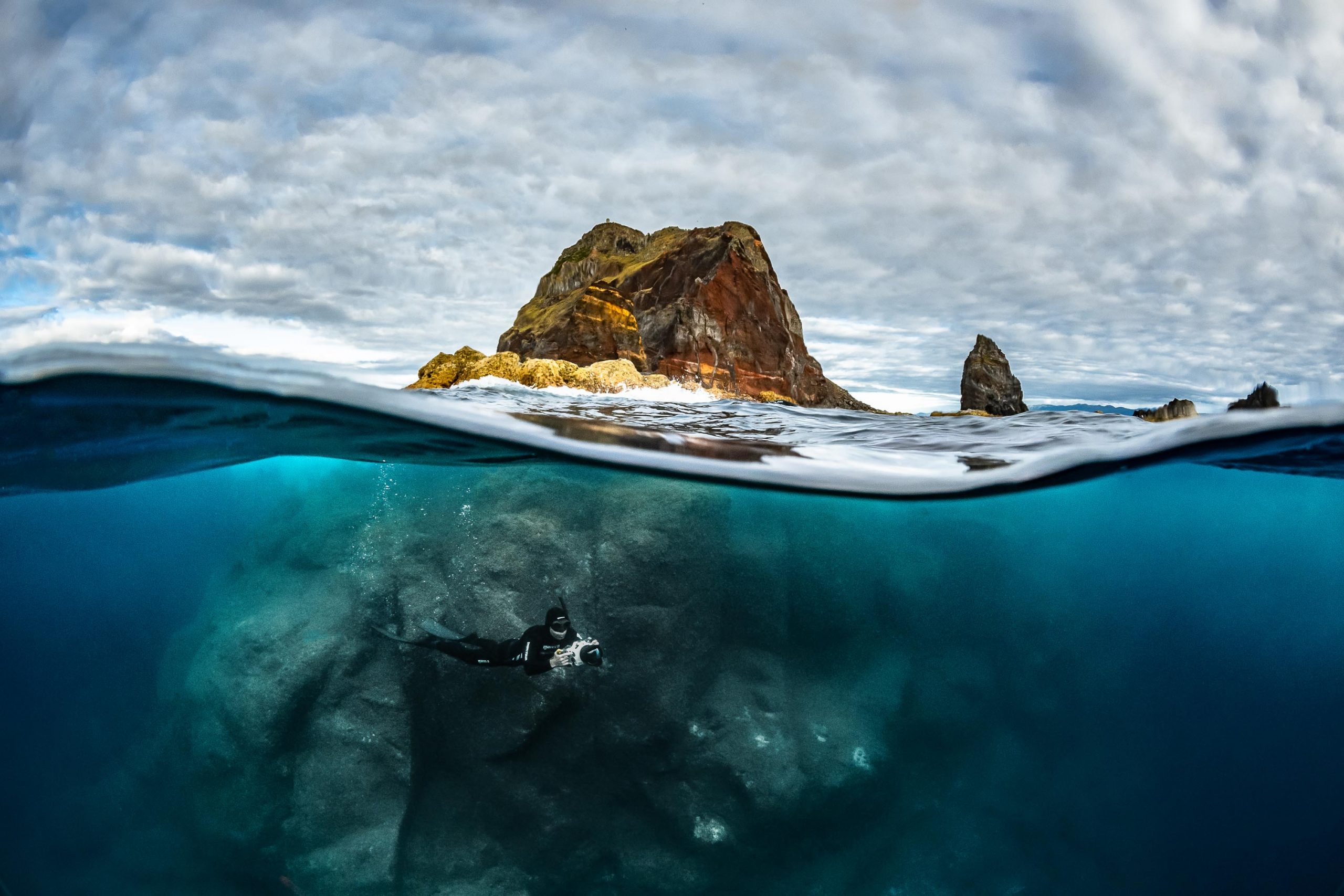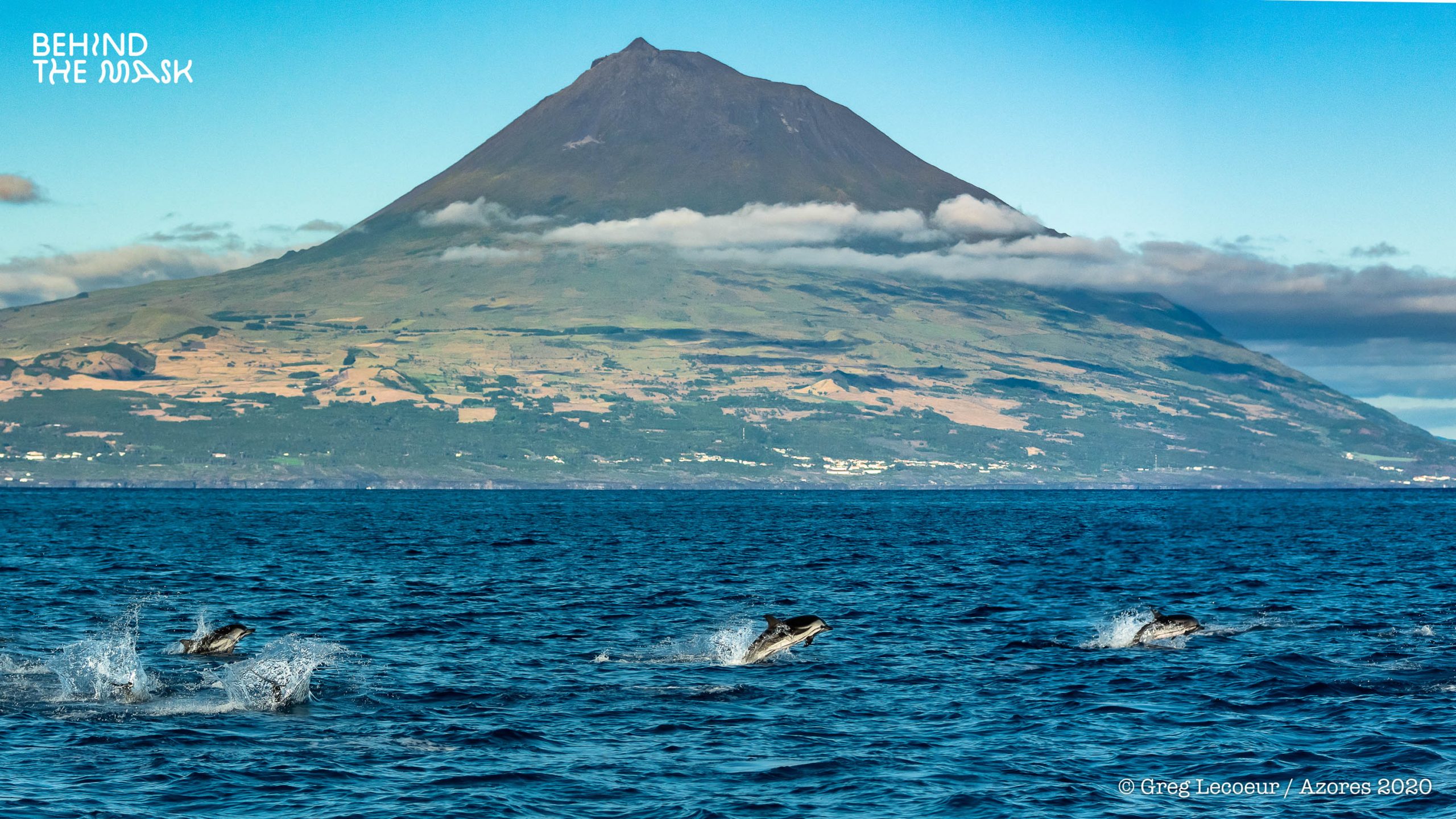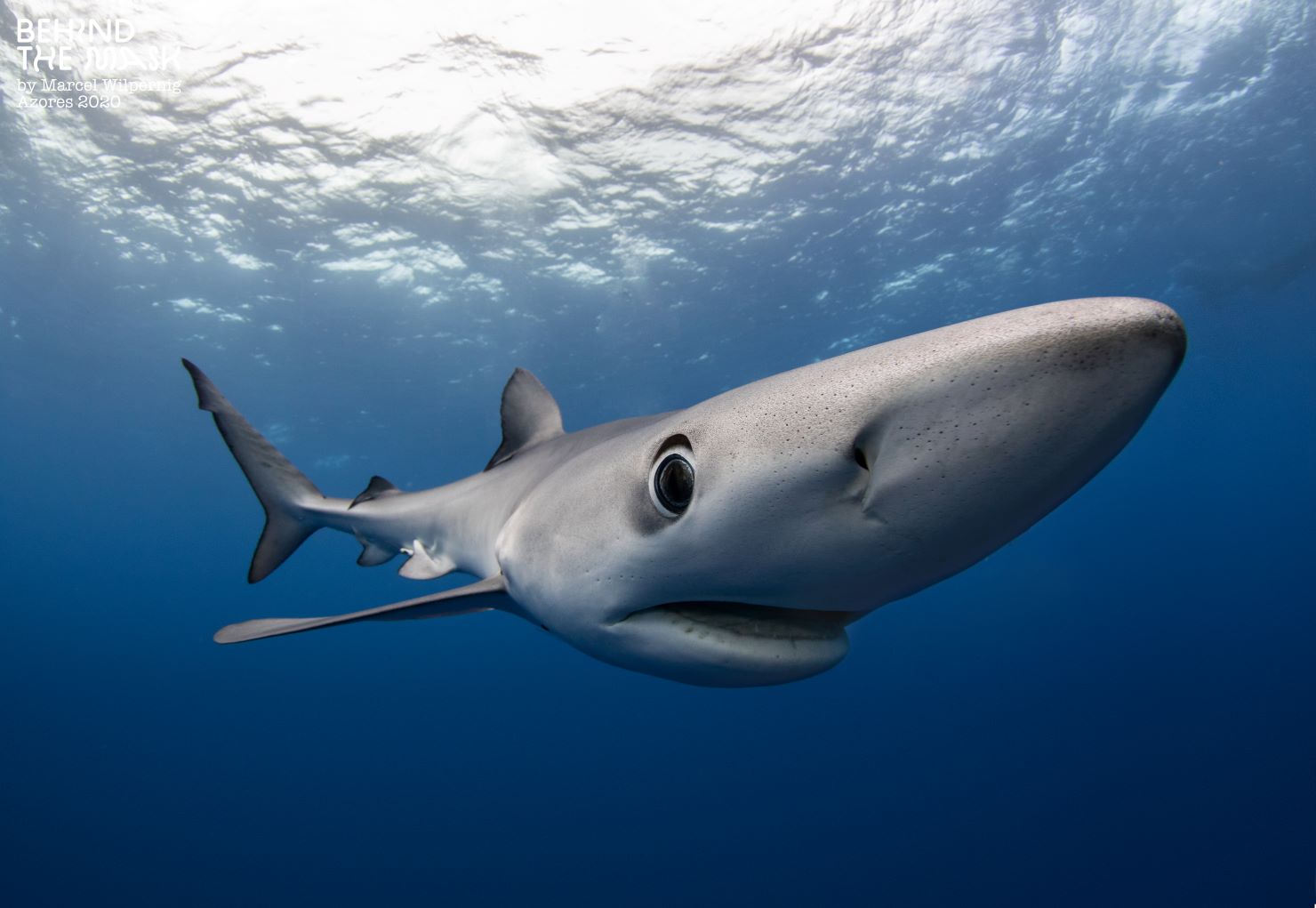If you like the following, this trip might be for you:
Sensational Sharks 🦈
The waters around the island of Faial still attract blue sharks species in large numbers. During these dives, other shark species such as mako sharks and smooth hammerheads can sometimes be spotted! And that is not all. Around the end of summer the warmer waters around the Azorean island of Santa Maria attract the ocean's largest fish: whale sharks.
Dolphins & Whales 🐋
The Azores are a true hotspot for cetaceans, predominantly whales and dolphins. One of the most emblematic species around the island are sperm whales.Although diving with these giants is not allowed without permit, experiencing their presence from a small boat can be just as exhilarating. Jumping in with the giant pods of dolphins is allowed though!
Manta Madness 🪁
Flocking together in groups as big as 60 individuals, the sickle fin devil ray spends the summer around offshore seamounts in Azorean waters of Princess Alice. This rock formation does not only attract rays either, as large schools of other fish are often seen around the pinnacle. Schools of tuna, barracuda and amberjacks are often spotted sawrming the area.
Unique Combotrip 🌋
The Azores comprise of 9 islands, offering travellers a lot of areas to explore. We want to make sure people making the journey here, can actually enjoy as much of the marine spectacles as possible. That is why we offer a combotrip to of arguably the best diving places in the archipelago for large pelagics and more: both Faial and Santa Maria.
Photo and Video
Meet David Serradell, professional underwater photographer and videographer, dive instructor and instructor. A natural born BTM Trip Leader, being able to help you out not just in the water but also in the editing and photography room. David is an ocean animal, born to dive and always out to help other ocean enthusiasts.
Small Group Travel 👨👩👦👦
In order to keep the interactions in the water as authentic as possible, we try to keep our group travels small and intimate. We set a maximum group size of 6 people for this journey to the Volcanic island in the middle of the Atlantic. The Azores are a place where time stood still, and we want to do our best to help keep it that way.
This place is alive
"The Azores are a top destination on our European doorstep. Hardly any mass tourism, authentic small accommodations and warm hearted people. The ocean is full of surprises here: dolphins, sharks, whales... There always seems to be something that is popping out on the surface. It's just alive. We heard incredible things about Santa Maria, I'm happy we can finally bring a limited group of divers there."
- Marcel, Behind the Mask Travel-
Meet your BTM trip leader
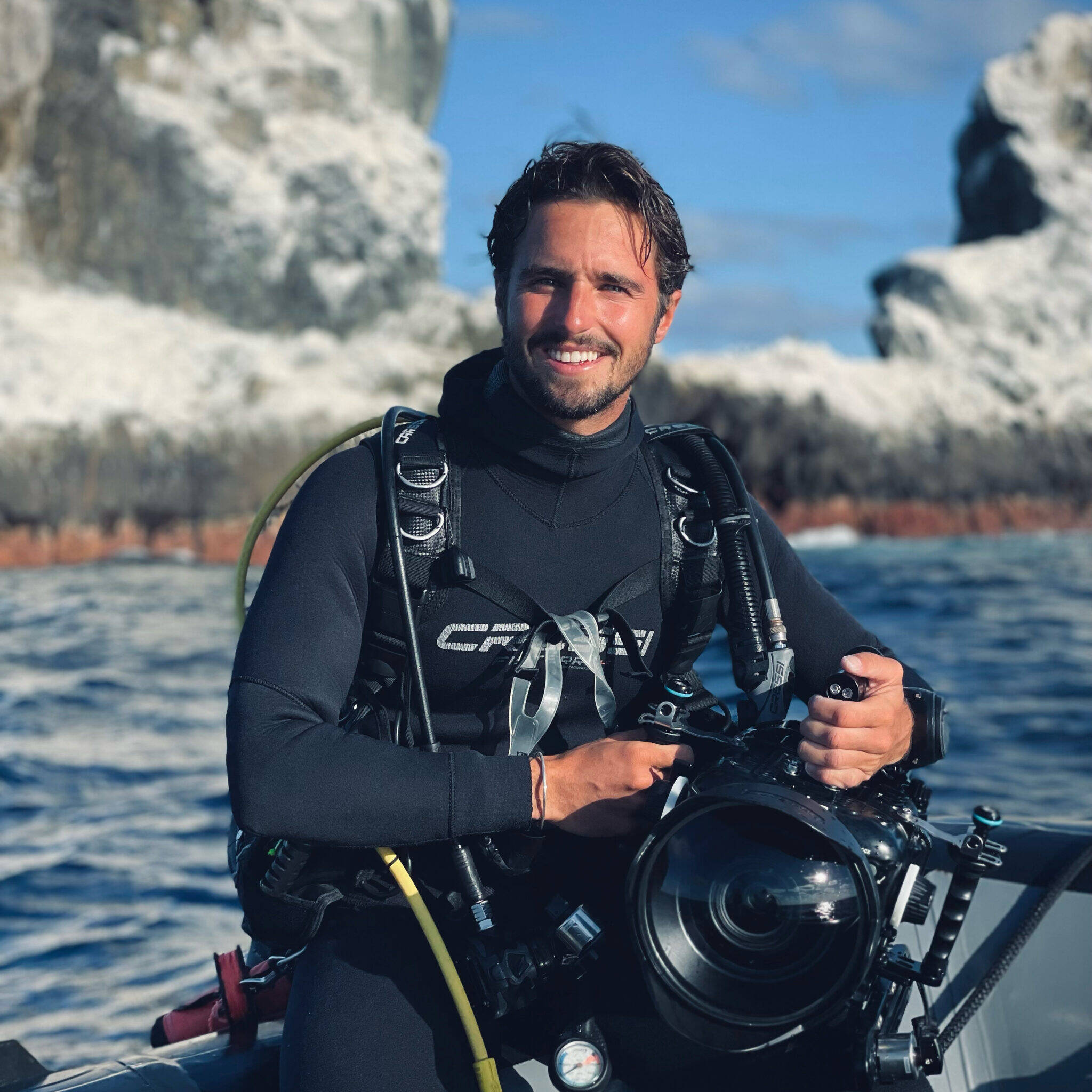
David Serradell
UW Photographer & BTMT Trip Leader
Azores Combotrip
August 4th - 18th, 2024
Rates & Inclusions:
- per person
Included:
- All necessary airport transfers on both islands
- 7 nights Santa Maria, Charming Blue Hotel, Double/Twin room with breakfast
- 7 nights Faial, Casa Buonvento Faial, Twin- or double room with breakfast
- Behind the Mask Travel Trip leader David Serradell
Activity days Faial:
- Mandatory check-dive
- 1 day ocean-going trips looking for bait balls, whales & dolphins (~ 8 hours)
- 1 full day trip to Princess Alice Bank (~ 8 – 12 hours on the sea, 2 dives incl. weights & tanks)
- 2 half day (3-4 hours) shark dive experience incl. guide, 1 tank, weights
- 1 day Hammerhead excursion to north Faial (freediving/snorkelling only)
Activity days Santa Maria:
- 3 dive days a 2 dives per day including all fees for Ambrosio and Formigas dive sites
- 2 days offshore expedition looking for whales sharks and bait balls (freediving/snorkelling)
- All days including private boat charter, skipper, dive guides, tanks (not for offshore expeditions), weights
Not Included:
- Flights to Horta (HOR) / Santa Maria (SMA) starting from 450 €
- Connecting flight between the islands starting from 100 €
- Food & drinks (except breakfast)
- Additional activities
- Tips
- Single room surcharge
- Rental Equipment and Nitrox on Santa Maria (2,50 € per tank)
For extensions in the Azores, please contact us!
Important note: Minimum number of participants 6 persons to confirm and carry out the trip. Our terms and conditions apply.
We strongly recommend that you take out travel insurance with our partner DiveAssure.
August 4 to 18, 2024
Faial
The trip starts and ends in Horta (Airport HOR) on the island of Faial on July 7 and 18. (Days of arrival and departure). You will be picked-up by the crew and transferred to the guest house.
04.08. – 11.08.2024
- 7 nights Faial guesthouse Casa da Baia with breakfast
- 5 days water action with SeaRiders:
- 2 days of blue shark diving
- 1 day ocean safari
- 1 day hammerhead diving
- 1 day Princess Alice mobula ray diving
- 1 day free (optional hike to Mt. Pico we can organize – tickets are needed to get up the vulcano)
Santa Maria
On August 11th, a connecting flight will bring you to the island of Santa Maria through Ponta Delgada.
11.08. – 18.08.2024
- 7 nights at Charming Blue Hotel with breakfast
- 5 days water action with:
- 4 dive days (min. 2 x Ambrosio, 1 x Formigas/Dollabarat)
- 1 offshore expedition looking for baitballs and whale sharks
Daily Plan
Due to unpredictable weather conditions, the daily action plan will be discussed one day before or even change in the morning again. This means you should be flexible and ready for some short-notice changes every day. The activities included will happen at some point during the week. If some trips won’t be possible, there will be a refund or other similar activities instead. This group is limited to 8 divers on private boats which maximizes the experience but also makes it easier to plan and discuss within the group.
Our Trip Leader – David Serradell
For this special combotrip, we are so proud to team up with professional underwater photographer David Serradell. We have been friends with David for years, and were impressed with his underwater presence and accommodating energy. David is a true octopus, being freediving and scuba instructor, having worked in marine conservation and graduated as veterinarian. We honestly cannot image a better trip leader to make sure that this is a trip of a lifetime for all our beloved guests.

Faial
Casa BuonVento, located in the heart of Horta, Faial Island, Azores (Portugal) is an ancient house dating from the beginning of 20th Century. It was totally renovated in 2017 with respect for its original “soul” and charme, without compromising comfort. The rooms, all different from each other, are decorated with custom-made furniture created or restored with taste and imagination. Some of the rooms have a view of the Pico mountain and the sea. Available for the guests is a shared, fully equipped kitchen (tableware, cutlery, appliances) and a little lounge area with sofa, TV and books.
Within walking distance of the house you can find cafes and restaurants to suit all tastes. The Peter Café Sport with its Scrimshaw Museum, the dock and its colourfull “murales”, Porto Pim, Monte Queimado and Monte da Guia where you can enjoy a very pleasant view of Porto Pim bay. Also within walking distance is a shopping mall and a grocery store.
Santa Maria
Charming Blue in Vila do Porto offers comfy rooms with cable TV, some even with sea or pool views and private baths. Free WiFi is a bonus, and adventure-seekers can dive, cycle, or hike nearby. The airport is just 3 km away, and the place has been hosting happy guests since 2016.

The Azores
The Azores (Portuguese: Açores) are an island archipelago located in the North Atlantic Ocean, roughly halfway between mainland Portugal and North America. The archipelago consists of nine islands of volcanic origin that are known for their untouched natural scenery and friendly inhabitants. Apart from the volcanic craters, green meadows, lakes and waterfalls, Azores are a true eco-tourism paradise offering incredible marine biodiversity, whale watching and world-class diving.
The Island of Faial
Located only 4.5 nautical miles from the island of Pico and approximately 14 nautical miles from the island of São Jorge, Faial is one of the ‘Triangle Islands’. Recognised as the yachting capital of the northern hemisphere, it has a strong connection to the sea with its main port – Horta Marina – providing a safe harbour for thousands of vessels as they cross the Atlantic. The number of sailboats huddled in the small bay adds to the charm of this city, which lies in the shadow of the extinct volcano of Guia Hill. No visit to Horta is complete without a visit to one of its most famous Portuguese bars – Peter’s Café Sport. Overlooking the Marina with Mount Pico as its backdrop, the walls are covered in flags left by travellers, giving the bar a sense of the history of the city. Faial was the site of the Azores last major eruption, the Capelinhos Volcano (1957/58). The landscape created by the eruption on the island’s west tip makes for a fascinating day trip and the Capelinhos Volcano Interpretation Centre has lots of information about the devastation caused by the event.
The Island of Santa Maria
Santa Maria is one of the nine islands that make up the Azores archipelago, situated in the North Atlantic Ocean. It is the southernmost and oldest of the Azorean islands, with a rich history dating back to its discovery in 1427. Santa Maria is known for its stunning natural beauty, featuring lush green landscapes, picturesque beaches, and rugged cliffs. The island’s climate is relatively dry and warm compared to the other Azorean islands, making it a popular destination for sun-seekers and outdoor enthusiasts. Santa Maria also offers a glimpse into its historical past with charming villages, traditional architecture, and cultural festivals that celebrate its unique heritage.

More about Azores islands
All the nine islands of the Azores Archipelago are of volcanic origin and are located in the North Atlantic, scattered along a 600 km stretch of ocean from Santa Maria to Corvo, approximately between 37° and 40° north latitude and 25° and 31° west longitude.
The islands of the archipelago are divided in three geographical groups: the Eastern Group, comprising Santa Maria and São Miguel, the Central Group, including Terceira, Graciosa, São Jorge, Pico and Faial, and the Western Group, composed by Corvo and Flores. The Azores, along with the archipelagos of Madeira, Canary Islands and Cape Verde, constitute the biogeographic region of Macaronesia, a name which means “fortunate islands” for those who live there and visit them.
In the realm of legend, some associate the Azores to the Atlantis, the mythical island kingdom quoted by Plato. As for history, references to nine islands in the Atlantic Ocean located approximately in the position of the Azores can be found in books and maps since the 14th century. However, it was with the Portuguese Maritime Discoveries, led by Prince Infante D. Henrique, that the Azores were definitely registered in the map of Europe. It is unknown whether the first navigator to reach the archipelago was Diogo de Silves in 1427 or Gonçalo Velho Cabral in 1431. The origin of the name Azores is also debatable as there are various theories. The most common associates the designation of the common buzzards found on the islands which were mistaken as being another bird of prey: the northern goshawk (açor). What is now certain is that it was Prince Infante D. Henrique who incited the settlement of the islands. First, animals were sent, between 1431 and 1432, and later settlers started to arrive from 1439.
From that date, the settlement continued throughout the 15th century (Western and Central Groups) and the 16th century (Western Group). Jews, Moors, Flemish, Genovese, Englishmen, Frenchmen, and African slaves came together with the Portuguese from the mainland to face the hardships of such a task.
This epic start moulded a people that throughout the centuries was able to resist volcanic eruptions, isolation, invasions of pirates, political wars and infesting diseases. The courage of the Azorean people was confirmed when they resisted the Spanish domination during the succession crisis of 1580, and when they supported the liberal movement during the civil war (1828-1834).
The Azores have a long list of natural parks, of areas of protected landscape, of protected fauna and flora species, of forest reserves, and of sites with geological interest guaranteeing the preservation of a priceless natural legacy. As a form of compensation for all of this effort, the Azores are considered to be a sanctuary of biodiversity and geodiversity and one of the best locations for Nature Tourism.
In the Atlantic Ocean, life multiplies itself by more than two dozen species of dolphins and whales that either inhabit or pass through Azorean waters. There are abundant colonies of molluscs, crustaceous and fish, thus completing the region’s extraordinary marine diversity.



